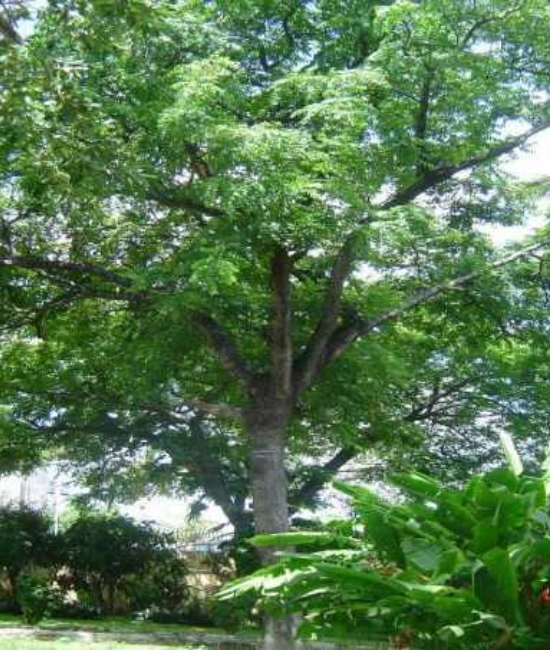A árvore de Taperabá pode atingir até 25 metros de altura, possui casca fina e de cor amarelo-alaranjada, com polpa saborosa e ácida.
A cajazeira é uma planta decídua de grande porte que supera 20 metros de altura, com um tronco coberto por casca grossa e áspera que se ramifica. Quando está em flor e frutificação, seu grande dossel torna-se vistoso e impressionante. As folhas podem alcançar até 30 centímetros de comprimento. As flores são esbranquiçadas e geralmente ocorrem a autopolinização. O fruto é uma drupa de 3 a 6 cm de comprimento, ovalada ou alongada, ligeiramente achatada na base, com cor que varia do amarelo ao laranja quando maduro, casca fina e polpa amarela a laranja, o que confere ao fruto uma espessura fina, suculenta e com sabor que varia de doce a ácido, podendo mudar conforme a planta. A polpa é também muito aromática e de sabor agridoce, com bons níveis de açúcares, vitaminas A e C, e carotenoides. O peso do fruto pode variar bastante. Na Bahia, foram encontrados frutos pesando de 4,8 a 37,4 g.


Os frutos podem ser consumidos in natura e são encontrados em mercados de rua. A madeira da taperabá é leve e fácil de trabalhar, sendo muito útil para carpintaria e pequenas embarcações. A casca da árvore de taperabá é aromática e possui propriedades adstringentes, eméticas, antidiarreicas, antidisentéricas e anti-hemorroidais, sendo que estas últimas também são atribuídas à raiz. As folhas mostraram a presença de taninos em estudos fitoquímicos, além de saponinas, resinas, esteróis e triterpenos, flavonoides e alcaloides. Na medicina tradicional, as folhas e a casca do tronco da cajazeira são usadas para tratar distúrbios infecciosos, especialmente diarreias. As flores são melíferas. O rendimento industrial da polpa é de cerca de 40%, e estima-se que apenas 30% da colheita é utilizada devido a perdas na colheita e transporte, devido à perecibilidade dos frutos.
Áreas degradadas podem ser recuperadas com a plantação de cajazeiras, pois atraem pássaros. Em paisagens, é considerado devido ao seu crescimento em altura.

© 2021 Seeding Amazon – Todos os direitos reservados. CNPJ: 43.963.207/0001-74
| Cookie | Duração | Descrição |
|---|---|---|
| cookielawinfo-checkbox-analytics | 11 months | This cookie is set by GDPR Cookie Consent plugin. The cookie is used to store the user consent for the cookies in the category "Analytics". |
| cookielawinfo-checkbox-functional | 11 months | The cookie is set by GDPR cookie consent to record the user consent for the cookies in the category "Functional". |
| cookielawinfo-checkbox-necessary | 11 months | This cookie is set by GDPR Cookie Consent plugin. The cookies is used to store the user consent for the cookies in the category "Necessary". |
| cookielawinfo-checkbox-others | 11 months | This cookie is set by GDPR Cookie Consent plugin. The cookie is used to store the user consent for the cookies in the category "Other. |
| cookielawinfo-checkbox-performance | 11 months | This cookie is set by GDPR Cookie Consent plugin. The cookie is used to store the user consent for the cookies in the category "Performance". |
| viewed_cookie_policy | 11 months | The cookie is set by the GDPR Cookie Consent plugin and is used to store whether or not user has consented to the use of cookies. It does not store any personal data. |